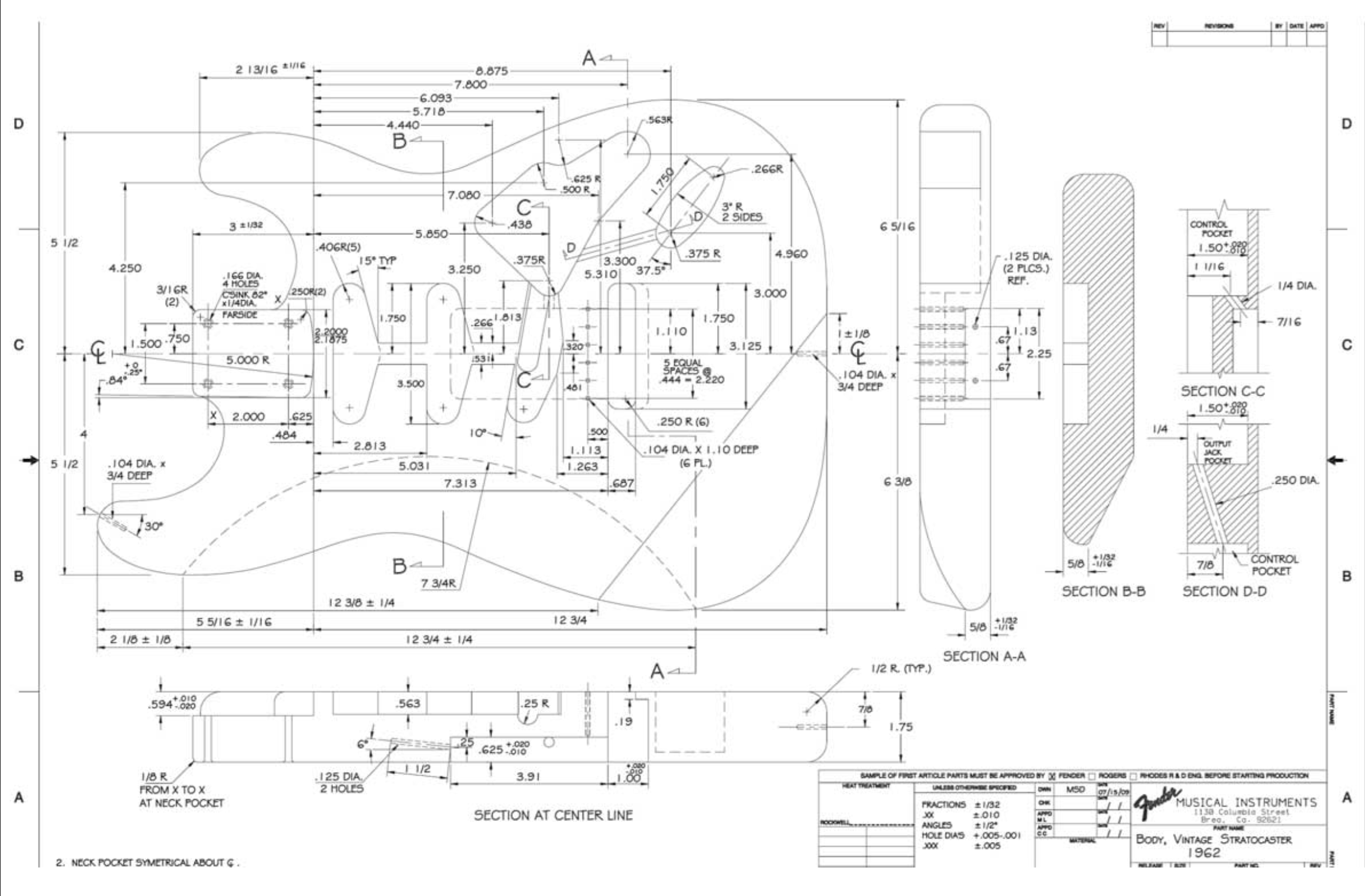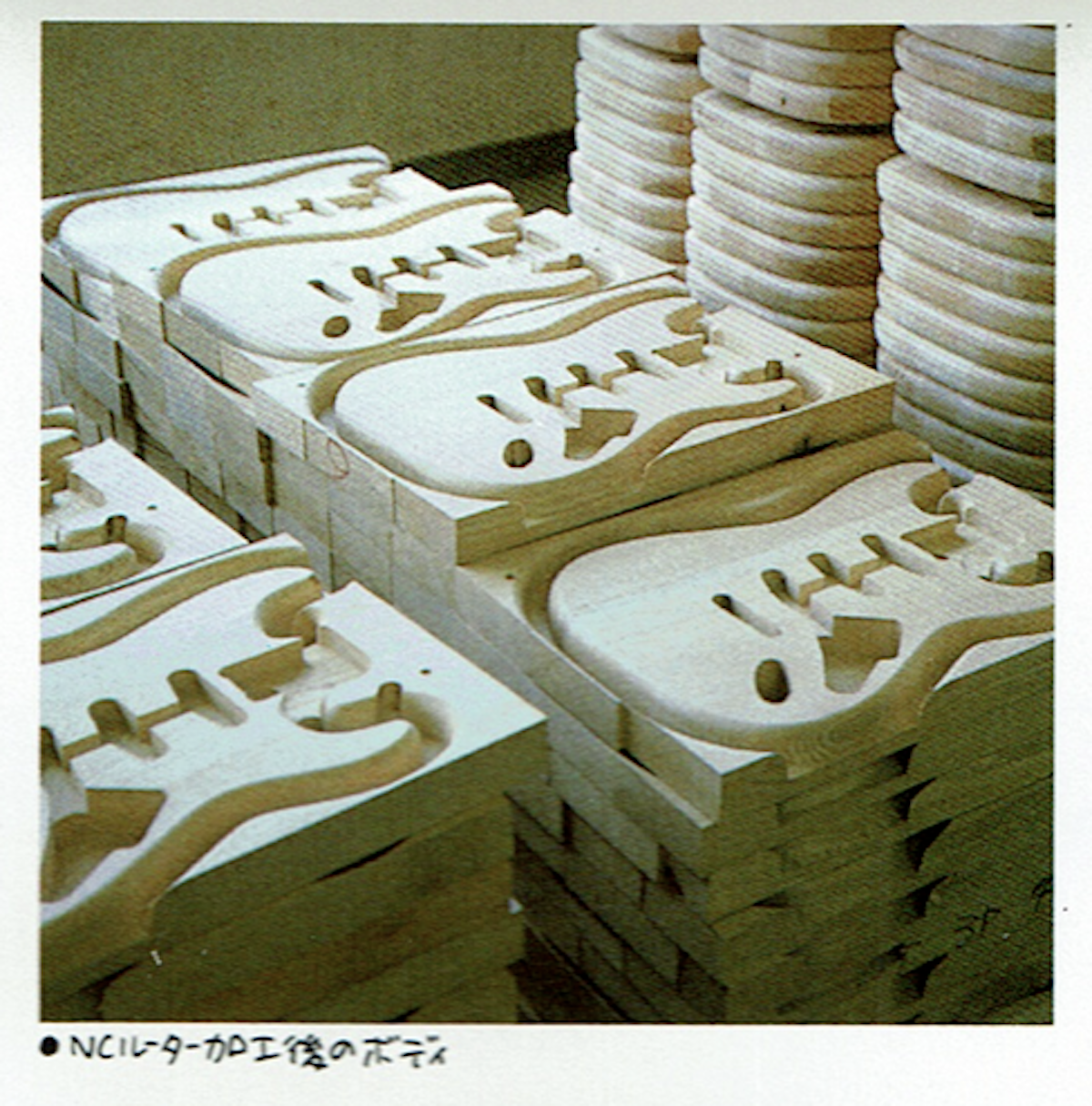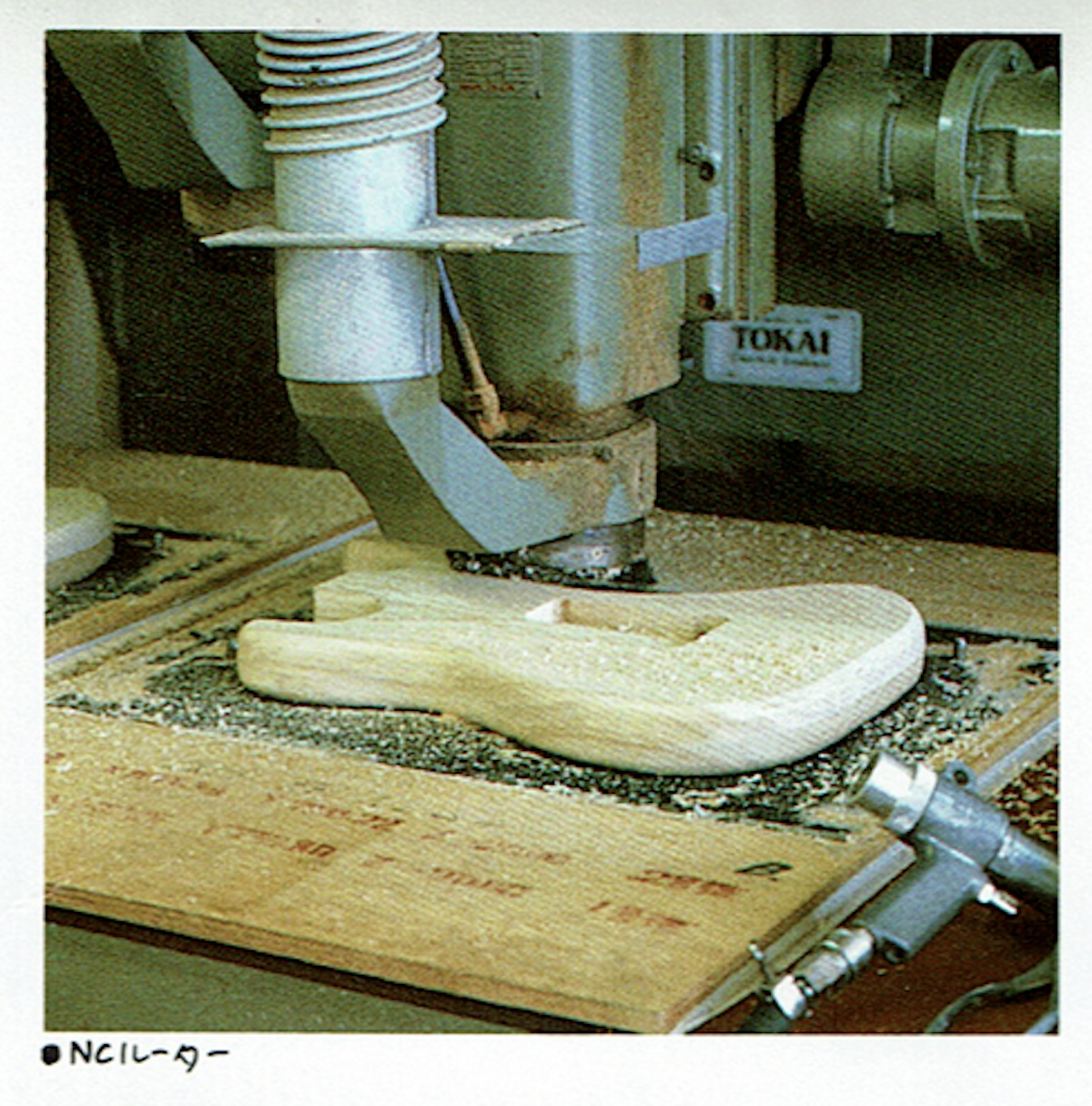You are using an out of date browser. It may not display this or other websites correctly.
You should upgrade or use an alternative browser.
You should upgrade or use an alternative browser.
Source of Specs For Vintage Fender Strats?
- Thread starter Sigmania
- Start date

Help Support Tokai Forum:
This site may earn a commission from merchant affiliate
links, including eBay, Amazon, and others.
Mr. Omote of Fernandes?
"They sent Mr. Omote to the States to investigate more guitars. He brought back many second hand guitars (well, these are now vintage guitars). Then, they started to make more detailed replicas….
Probably, in 75-76, Fernandes has started to discussion with Tokai Gakki to start the OEM production.
In 1977-80, Fernandes started the new logo mark guitars (We called it as Stone <in Japanese "Ishi" --- The mark is very closed to Japanese Chinese character "Stone") logo. Tokai use very good wood materials for this OEM contract. Tokai received many manufacturing and construction knowledge from Mr. Omote and guitars which he brought from the States."
http://www.music-trade.co.jp/fenandeshistory.html
"They sent Mr. Omote to the States to investigate more guitars. He brought back many second hand guitars (well, these are now vintage guitars). Then, they started to make more detailed replicas….
Probably, in 75-76, Fernandes has started to discussion with Tokai Gakki to start the OEM production.
In 1977-80, Fernandes started the new logo mark guitars (We called it as Stone <in Japanese "Ishi" --- The mark is very closed to Japanese Chinese character "Stone") logo. Tokai use very good wood materials for this OEM contract. Tokai received many manufacturing and construction knowledge from Mr. Omote and guitars which he brought from the States."
http://www.music-trade.co.jp/fenandeshistory.html
Rick Nielsen of Cheap Trick?
http://www.tokaiforum.com/viewtopic.php?f=11&t=26131&p=195851&hilit=cheap+trick#p195851
bluejeannot said:Where I got this information from I don't quite remember, but the story went that Rick Neilson's Cheap Trick were on a tour of Japan in the 70s and Tokai Gakki entered into an endorsement arrangement with him and his vintage strats and teles(this may have also happened to his Gibsons) and their hardware were examined in great detail and replicated. Tokai reproduced the woodwork and the bridges which were pot metal at the time were supplied by a generic Japanese manufacture that produced strat bridges for a number of other strat copy manufacturers...
http://www.tokaiforum.com/viewtopic.php?f=11&t=26131&p=195851&hilit=cheap+trick#p195851
Fender itself?
http://www.tokaiforum.com/viewtopic.php?f=11&t=26165&p=199345#p199345
Peter Mac said:Hi Geoff,
It is interesting to note your comment about the Fujigen contract from Fender.
From what I have read, Mac Seshimoto (who was the go-to guy at Tokai )has stated that Tokai turned down the Fender contract first.
This would have been in 1980 I would imagine as in 1981 all the Springys had changed to "Fender-specs" and it was just prior to a launch into the USA Market. I can only imagine THAT problem had they accepted the Fender Japan contract and then marketed against Fender in the USA.
To this day, all 1981-1986 Tokai Strat/Tele/PB/JB are interchangeable with MIJ and CIJ Fenders.
Hmmm, so Springy parts on a CIJ Fender is still all Tokai . . . LOL
regards
Peter mac
http://www.tokaiforum.com/viewtopic.php?f=11&t=26165&p=199345#p199345
One thing I wondered after posting Peter Mac’s comment was whether there is variation on the original specs for individual guitars? Guitars that were made in the same period at Fender based on the shift or employees building them?
I had heard a story about the V neck and a guy filling in or something for the regular guy that sanded necks and how he inadvertently ended up making a more pronounced V.
So it would make sense that there would need to be standardized designs if as Peter said parts were interchangeable between lines.
In other words, it would be important which individual guitar you are copying.
I had heard a story about the V neck and a guy filling in or something for the regular guy that sanded necks and how he inadvertently ended up making a more pronounced V.
So it would make sense that there would need to be standardized designs if as Peter said parts were interchangeable between lines.
In other words, it would be important which individual guitar you are copying.
Meanwhile where Dan Smith at Fender got the specs they potentially shared with Tokai in 1980/81?
*Note also that Dan Smith in this interview addresses the variability in individual guitars made at the same time at the bottom of the following quote.
So it matters which individual guitar you are replicating.
”With John Page’s help, one of the first things that I knew, coming from the outside as a player—and half the guys on the inside knew this, too—was nobody wanted to buy a three-bolt neck with a great big headstock and a bullet truss-rod. So one of the first things we did was to change the product back over to four-bolts. We had an incredible amount of inventory of bodies and parts that we had to work through, but we changed it back to the four-bolt neck and the right headstock.
Also, we knew that the best thing for Fender to bring out to show people that we were back was to reissue what everybody loved, which is why we did the ‘57s and ‘62s and all that kind of stuff. So we looked at a lot of vintage guitars. I’ll never forget John and I going to DeKalb, Illinois, where we’d found that Larry Henrikson at Ax In Hand had about 200 Fenders in place. So we went there, landed in Chicago in January, freezing cold, about 70 below. Can’t remember how many hire cars we went through before we found one that worked. Finally we get to Larry’s shop and spent a whole day there.
We were there on the mission to make sure we measured the stuff and got the data. We wanted to get it as close as we could. We took pickguards off, took pictures of pockets, tested paint, measured necks, all that kind of crap. And we left having bought perfect examples of each era, too. I remember we spent $5,600 on three guitars, which for Fender at the time was ludicrous. We went out and bought back our own product!
We bought a ’57 P-Bass, which we still have—it was pristine when we got it. We bought a ’60 Jazz Bass, we bought a ’61 Stratocaster—the body was ’60 and the neck was ’61—and the sad thing about those, I mean we bought them because we wanted to take them apart, so they look like **** now. We actually had a ’51 Tele, and the sad thing is it might have been one of the first ones that said Telecaster, a very early date. We had that guitar, and an early ‘50s P-Bass. But there was a fire in the then-R&D building and we lost, oh, the Tele, a ’56 Strat—we’ve still got bits of the burned-up Tele hanging on the wall.
Anyway, that trip to Larry at Ax In Hand helped us launch the Vintage series. And so when people said oh, the contour isn’t right, this isn’t right, that isn’t right, you know what? We did not see two guitars that had—in fact, he had successive serial-number Stratocasters, and one of ‘em had real skinny contours, the other one was almost like something from the ‘70s. There was nothing ******** about them either—they were right.
https://reverb.com/news/interview-f...os-app&utm_medium=ios-share&utm_campaign=blog
*Note also that Dan Smith in this interview addresses the variability in individual guitars made at the same time at the bottom of the following quote.
So it matters which individual guitar you are replicating.
”With John Page’s help, one of the first things that I knew, coming from the outside as a player—and half the guys on the inside knew this, too—was nobody wanted to buy a three-bolt neck with a great big headstock and a bullet truss-rod. So one of the first things we did was to change the product back over to four-bolts. We had an incredible amount of inventory of bodies and parts that we had to work through, but we changed it back to the four-bolt neck and the right headstock.
Also, we knew that the best thing for Fender to bring out to show people that we were back was to reissue what everybody loved, which is why we did the ‘57s and ‘62s and all that kind of stuff. So we looked at a lot of vintage guitars. I’ll never forget John and I going to DeKalb, Illinois, where we’d found that Larry Henrikson at Ax In Hand had about 200 Fenders in place. So we went there, landed in Chicago in January, freezing cold, about 70 below. Can’t remember how many hire cars we went through before we found one that worked. Finally we get to Larry’s shop and spent a whole day there.
We were there on the mission to make sure we measured the stuff and got the data. We wanted to get it as close as we could. We took pickguards off, took pictures of pockets, tested paint, measured necks, all that kind of crap. And we left having bought perfect examples of each era, too. I remember we spent $5,600 on three guitars, which for Fender at the time was ludicrous. We went out and bought back our own product!
We bought a ’57 P-Bass, which we still have—it was pristine when we got it. We bought a ’60 Jazz Bass, we bought a ’61 Stratocaster—the body was ’60 and the neck was ’61—and the sad thing about those, I mean we bought them because we wanted to take them apart, so they look like **** now. We actually had a ’51 Tele, and the sad thing is it might have been one of the first ones that said Telecaster, a very early date. We had that guitar, and an early ‘50s P-Bass. But there was a fire in the then-R&D building and we lost, oh, the Tele, a ’56 Strat—we’ve still got bits of the burned-up Tele hanging on the wall.
Anyway, that trip to Larry at Ax In Hand helped us launch the Vintage series. And so when people said oh, the contour isn’t right, this isn’t right, that isn’t right, you know what? We did not see two guitars that had—in fact, he had successive serial-number Stratocasters, and one of ‘em had real skinny contours, the other one was almost like something from the ‘70s. There was nothing ******** about them either—they were right.
https://reverb.com/news/interview-f...os-app&utm_medium=ios-share&utm_campaign=blog
Found this. Not sure when this was drawn up.

https://www.electricherald.com/fender-stratocaster-templates/

https://www.electricherald.com/fender-stratocaster-templates/
Edit: NC routers used at Tokai as early as 1979. Possibly 1977. See here: CNC At Tokai?
The period when Tokai was in negotiations with Fender and potentially got measurements from them is also when they apparently got the NC, numeric control, router where they would need measurements to input to build guitar bodies and necks. Interesting.
From the 1981 Flat Top catalog:

● Body after NC router processing

● NC router
The period when Tokai was in negotiations with Fender and potentially got measurements from them is also when they apparently got the NC, numeric control, router where they would need measurements to input to build guitar bodies and necks. Interesting.
From the 1981 Flat Top catalog:

● Body after NC router processing

● NC router
Last edited:
Stratocasters made in Japan

On the left, Mr. Nakata, an executive at Fujigen and then founding member of Fender Japan, with a Greco SE1200.
The Greco in the picture, manufactured by Fujigen before Fender Japan was established, was the first sample Fujigen sent to Fender headquarters in the USA to show them they had the skill to manufacture Fender guitars in Japan. The quality of the sample was good, but Dan Smith wanted them to change some details. So, he went to Japan with some US Fender Stratocasters to explain to them what he wanted them to focus on. He even took a Greco's neck and reshaped it by hand as a sample of what he considered a perfect feeling neck shape for them to copy.

On the left, Mr. Nakata, an executive at Fujigen and then founding member of Fender Japan, with a Greco SE1200.
The Greco in the picture, manufactured by Fujigen before Fender Japan was established, was the first sample Fujigen sent to Fender headquarters in the USA to show them they had the skill to manufacture Fender guitars in Japan. The quality of the sample was good, but Dan Smith wanted them to change some details. So, he went to Japan with some US Fender Stratocasters to explain to them what he wanted them to focus on. He even took a Greco's neck and reshaped it by hand as a sample of what he considered a perfect feeling neck shape for them to copy.
Homer J. Simpson
Well-known member
The date on the drawing is illegible but the address is in Brea, which likely dates it to post-1985 (AFAIK the FMIC HQ was there before they moved to Scottsdale, AZ).Not sure when this was drawn up.
Similar threads
- Replies
- 22
- Views
- 1K
- Replies
- 4
- Views
- 624


